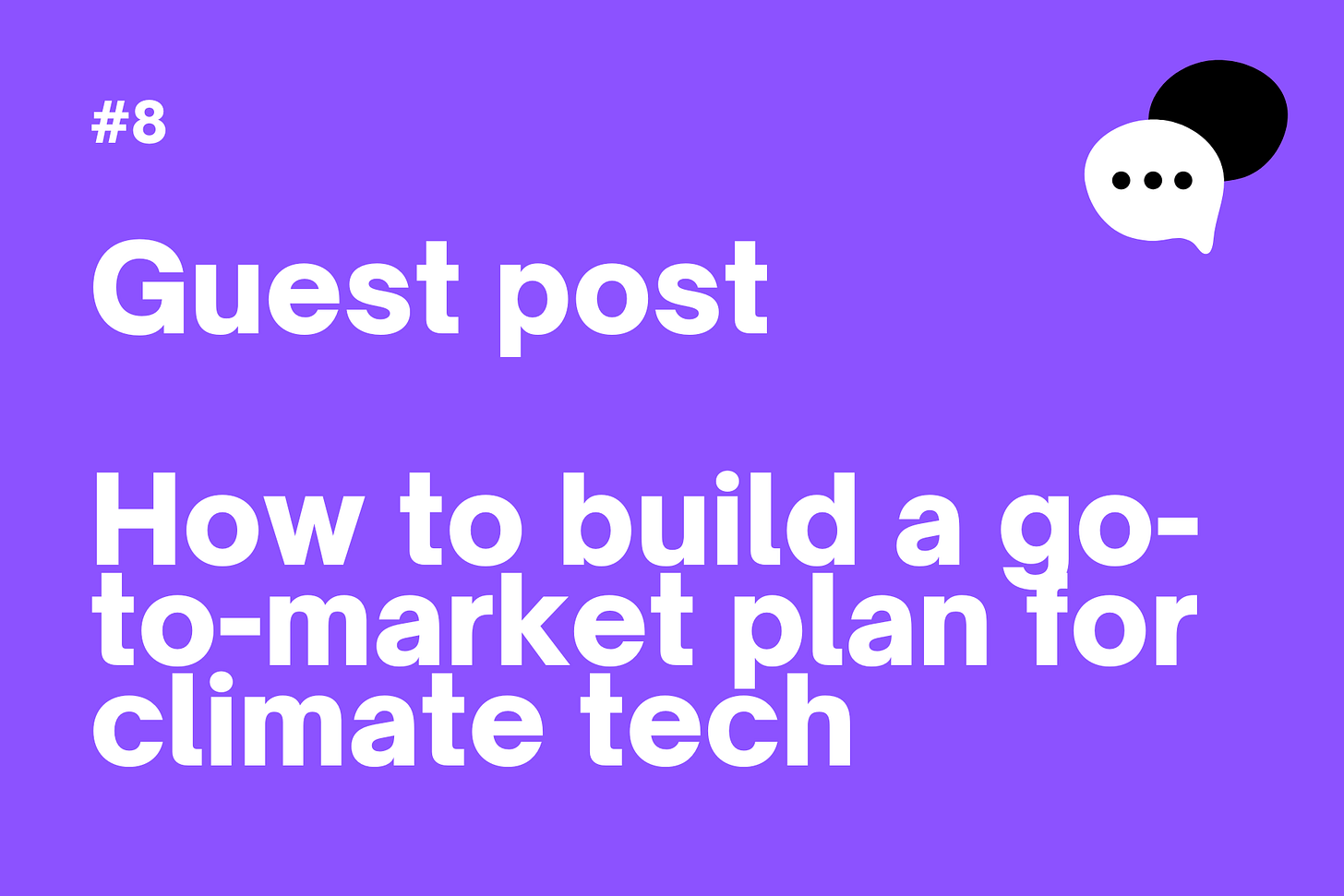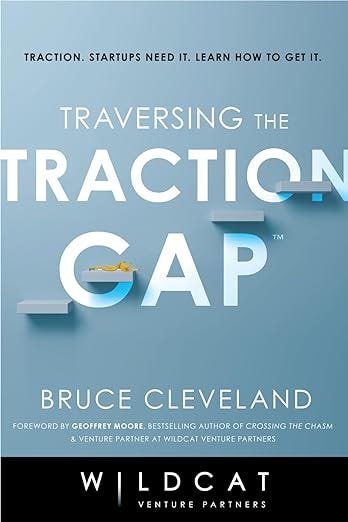How to build a go-to-market plan for climate tech
Guest contributor Robert O'Shaughnessy walks you through an eight-part go-to-market plan
Hello friends,
Have you been lucky enough to capture ‘lightning in a bottle’?
Better put the lid on fast.
This week we have a guest feature for you.
Robert O’Shaughnessy is a writer, marketer, brand strategist, founder, teacher, and advisor based in San Francisco, and this week he’s sharing a go-to-market (GTM) guide for early-stage climate tech startups.
He’ll walk you through how to structure and build your GTM plan.
Let’s get into it.
Entrepreneurs, founders, and everybody involved in the early stages of turning an idea into a business can understand that bit of magic — the conjuring that happens as ideas get put into motion. It’s lightning.
“When you’re lucky enough to catch lightning in a bottle, you put the lid on as fast as you can.” So advises writer Emily McKay.
Let’s talk about preserving that magic and bringing that idea to market.
What’s a go-to-market (GTM) plan?
A GTM plan is a strategic guide for your team to use in all communications. The finished plan will serve as a guide for understanding your market, your core audience, and others in the space. The plan aligns, provides invaluable research, gives insights into audience and motivators, and offers a framework for positioning and messaging.
An 8-part outline to formulate your GTM plan:
Stakeholder interviews.
These will help you understand the core value stakeholders believe your new brand or product will give to the market. As I prepare for these interviews, I like to identify three major themes so I can test these themes in my interviews to see if they resonate.
Themes.
Write up the major themes, or promises you wish to communicate in your brand messaging. In the early stages of launch, we marketers talk about moving our audience from the “pre-awareness phase” and into “awareness.” We want to make ourselves known to an audience that could be interested in what we’ve got.
These themes are an early pass at messaging — which is why I like to test them in the stakeholder interviews.
Research.
Quantitative research is carried out via tools such as surveys to get data, and qualitative research is carried out with questions, like those asked in the stakeholder interviews. Qualitative research gets at the mindset, or the “why,” while quantitative aims to measure, or count.
Research scope will be determined by budget. If you’re fully in start-up mode, you probably don’t have a giant budget, so the research I recommend is largely qualitative — in other words, the data that comes from your stakeholder interviews and competitor research.
Speaking of…
Competitor analysis.
Make a list of four companies that are in your space, and then determine the observations you’re going to research. I recommend creating a table that includes strengths, innovations, claims, customer experience, key messages, and a summary of what you take to be their positioning.
Sometimes (especially in startup land) the idea can be so novel that it seems as though there aren’t any competitors. If that’s the case for you, consider looking to companies with a similar business model in adjacent or ‘sister’ industries.
Positioning.
Your positioning is a passionately articulated statement of purpose that’s used by the entire team to understand the unique position you hope to occupy in the minds of your target customers. The statement clearly and succinctly communicates your unique value proposition.
But before writing the positioning statement, there’s a bit of homework.
1. I begin with positioning territories, or unique claims that we’ll present to the market. Take time to note approximately three differentiators, or proof points to support the unique claims you’ll make.
For example, in one GTM plan, we made the claim “our duty is to you” and backed this up with a proof point about being trustworthy, a proof point about being reliable, and a proof point about fiduciary responsibility.
2. Then I create the positioning matrix, which is a visual model that shows your brand or product’s position in the space you hope to occupy, relative to competitors. There are two axes, each representing attributes that are important to your market. You might think about one being related to price and one being related to value.
By plotting your spot on this matrix relative to competitors, you’re able to identify any caps and better understand how consumers will perceive you and your place in the market.
Voice, tone, and content guide.
With positioning established, you can give guidance on voice and tone. This often takes the form of a content guide. The content guide should share primary messaging and proof points for each key message. It should also give guidance on how to create content for specific channels, such as the website or social media. The content guide fits snugly into the bigger brand guide — the guide isn’t complete without this piece because it informs how the brand gets communicated to its audience.
And speaking of audience…
Personas.
A persona is a fictional representation of a target customer based on the research undertaken at the beginning stages of building your GTM plan. Personas help your team understand who they’re speaking to so you can tailor your language to meet their needs, preferences, and behaviors.
Then the GTM plan can clarify what content types are used to speak to each persona created.
Reporting and KPIs.
I like to conclude my GTM plans with suggested KPIs and how to measure success. KPIs, or key performance indicators, are the metrics determined to indicate if you’re reaching the right audience with the right messaging.
To set KPIs, think about building awareness (say, website traffic or followers on social channels) and conversions (such as sign-ups or sales). You’ll also want to consider metrics to measure loyalty and referred or repeat business. Once you’ve set your KPIs, you’ll want to ensure proper tracking tools are in place for ease of reporting.
The takeaway?
Your GTM plan is a comprehensive strategy for articulating your value to the right audience with the right messaging, so you can stand out in the market in a way that drives demand.
And that means…
Taking the time to create this plan sets the foundation for everything that comes after. The work that goes into it — and the knowledge you glean as a result of that work — will support you through your early growth as well as your long-term success.
The challenge ahead:
Preserving the magic means not skipping the foundational work. While founders may be eager to get their big idea out into the world, it’s difficult to establish product-market-fit without first doing the work to understand where your brand sits in your category’s positioning matrix and what core value stakeholders are looking for.
Thanks again to Robert O’Shaughnessy for this week’s feature. Check him out at OE Communications or You May Find Yourself — a podcast about work, career, and life on- and off- the great wheel.
HELPFUL RESOURCES
An oldie but a goodie. How to accelerate mainstream acceptance of new high-tech.
A practical guide for navigating the tumultuous early life of a startup, based on real-life examples.



